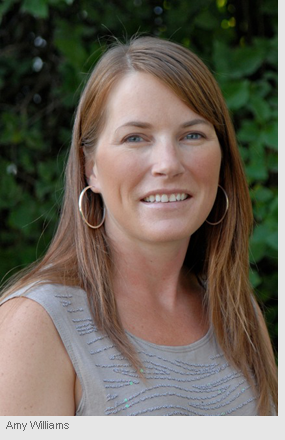
Montana Teacher Earns STELLAR Award
Fri Feb 24 2012
 Combining NASA materials with a trip to a research laboratory among other classroom tools to teach middle school students about life forms that exist in extreme conditions—even possibly outside Earth—has helped earn a Montana teacher a NASATalk STELLAR Award.
Combining NASA materials with a trip to a research laboratory among other classroom tools to teach middle school students about life forms that exist in extreme conditions—even possibly outside Earth—has helped earn a Montana teacher a NASATalk STELLAR Award.Amy Williams, a middle school science teacher at the Headwaters Academy in Bozeman, MT, is the recipient of the first NASATalk STELLAR Award of 2012. She will receive a $100 stipend as part of the award.
"The STELLAR Awards recognize excellent uses of NASA science, technology, engineering, and mathematics (STEM) materials by educators in classrooms or informal settings," said Chuck Wood, director of the Center for Educational Technologies, which operates the NASATalk website through the NASA-sponsored Classroom of the Future program. "Ms. Williams is being honored for the astrobiology unit she organized and integrated into her science curriculum."
Williams, who joined Headwaters in 2001 after teaching at the university level in California, said in her award application that this school year was the first time she attempted an astrobiology unit in her curriculum.
"What a fantastic experience it has been for me and my students!" Williams wrote. "NASA materials were essential for background information and for the development of several projects and activities. The astrobiology unit follows a unit in which students learn how we define life and the characteristics common to all living things. The astrobiology unit builds on previous lessons by reiterating concepts such as homeostasis, energy utilization, and evolutionary adaptations. Students also build on concepts introduced on a field trip to Yellowstone National Park the previous academic year. I also took full advantage of our school's proximity to Montana State University and its researchers, who are eager to connect with our students."
Williams' astrobiology unit spanned four weeks and built progressively from basic concepts related to extremophyllic microbes (microscopic organisms that thrive in conditions hostile to most living things on Earth). Students examined conditions on other planets and moons in our solar system before concluding with a look at NASA's search for life outside Earth. Her instructor-guided, inquiry-based lessons consisted of discussions, activities, experiments, projects, guest experts, and a tour of a research laboratory. More information about her astrobiology lesson plans and how she integrated NASA materials is available on the NASATalk website.
"Ms. Williams' lesson plans help her students to understand the concept of an extremophile in the context of their Montana vicinity," noted Dr. Debbie Piecka, educational researcher and instructional designer at the Center for Educational Technologies. "She reminds students of the extremophyllic life they observed in Yellowstone the previous spring. Then, they apply these concepts to habitability of a planet or moon."
Williams has received many honors during her teaching career. In 2006 she was one of eight teachers nationally to receive the A&E History Channel Ideas from Our Teachers award. She is a two-time recipient of a National Science Foundation Research Experience for Teachers fellowship at Montana State. Through the fellowship she has created and maintains an outreach program for middle school students that uses the scanning electron microscope at MSU.
"Students learn to expect a lot from themselves in my classes," Williams wrote. "I push them hard to achieve a high level of competency in the material and in their thought process. They are rewarded with praise when they succeed and help when they fail. My classes are constantly challenging, often daunting and always fun."
Williams has a bachelor's degree in Earth sciences from Montana State and a master's in geological sciences from UC Santa Barbara.
Educators are invited to review her winning application and previous STELLAR award profiles and apply for the award at the NASATalk website. The STELLAR acronym represents the intent of the award: STEM Teaching Excellence for Leading, Learning, Articulation and Reflection. The STELLAR Awards are given regularly based on certain themes, such as human spaceflight, Earth science, aeronautics, astronomy, space science, and exploration. The online application outlines the award criteria and encourages thoughtful, complete reflections about using NASA products.



